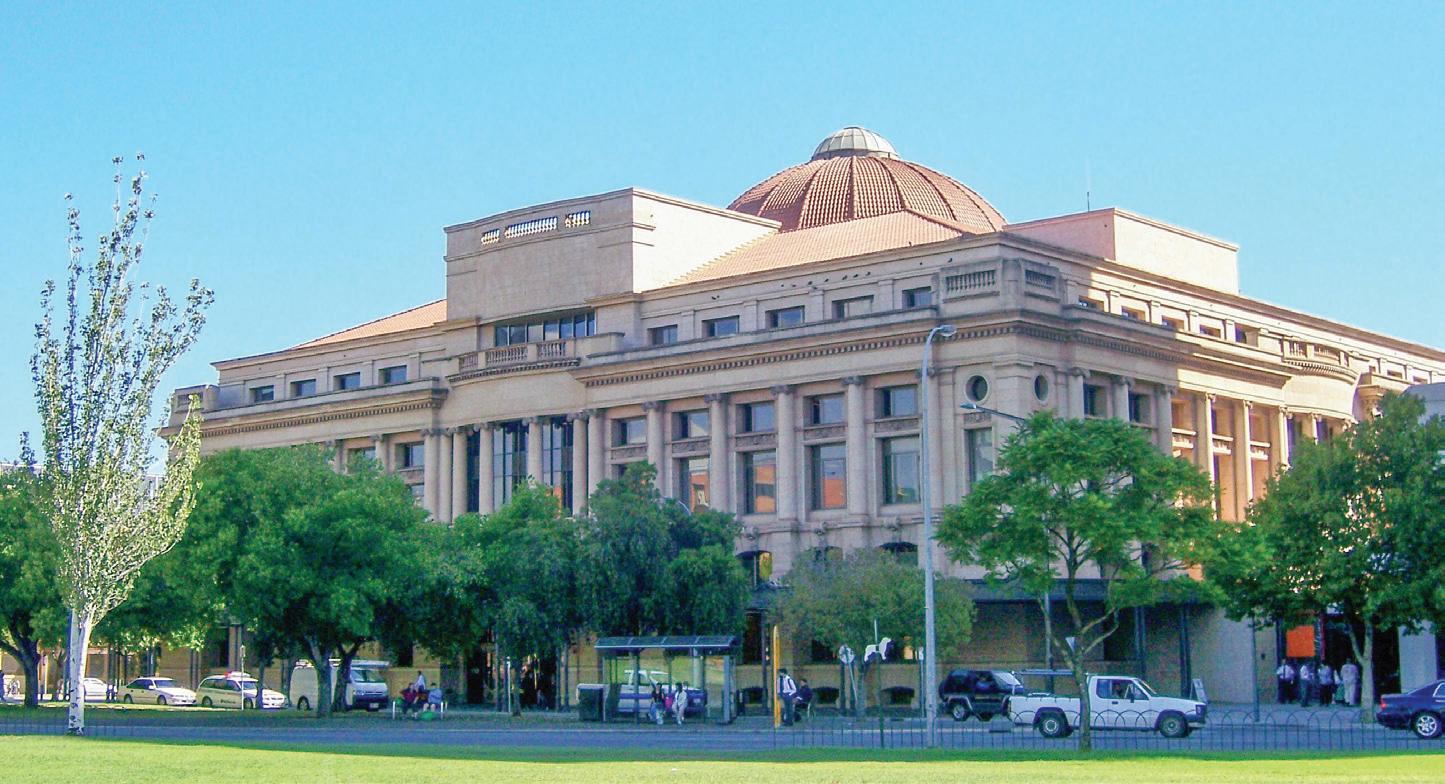
10 minute read
Risk Watch: Proper use of the Inactive Case List can save time, money & claims – By Grant Feary
Proper Use of the Inactive Case List can save time, money and claims
GRANT FEARY, DEPUTY DIRECTOR, LAW CLAIMS
Advertisement
The Masters of the District Court have, over the past two years, presented several papers at Law Society Seminars on the topic of the Inactive Case List and the Moratorium of Steps procedure under the Rules – see “Inactive Actions: The Consequences if actions are placed in the Inactive cases list and are not removed, Establishment of “Special Reasons” and the Moratorium of Steps Procedure”, Master Norman, Law Society Forum 15 February, 2018 and “Moratorium Upon Steps”, Master Blumberg, Port Lincoln Country Seminar, 19 July, 2019.
This is because the Masters place importance on the use of this procedure as a useful tool in managing their lists efficiently. If cases are appropriately in the Inactive Case List, and only come out when they become truly active, then the Court’s time is not wasted by adjourning inactive matters numerous times when they come up in the normal lists.
Notwithstanding the two papers presented recently, the Masters have advised that it is still the case that matters which should be in the Inactive Case List are still in the normal lists and that the profession should use the Inactive Case List more extensively.
The current Rule that governs the Inactive Case List and the Moratorium on Steps is R.123. There are two ways in which a matter can be placed into the Inactive Case List.
The first is under R. 123(1) where, in effect, the Court notifies the plaintiff that the Court will place the matter in the Inactive Case List if three months after the time the action should have been served no application for extending the time for service has been made, no defendant has filed an address for service and the plaintiff has not applied for judgment in default of the filing of a defence.
The second is under R. 123(5) where the plaintiff can, upon filing the originating process, nominate that the case be entered into the Inactive Case List. Where this occurs the plaintiff must serve notice (in the prescribed form) to the defendant informing the defendant that the case is to be placed in the Inactive Case List and notifying the defendant of their right to seek to have the matter proceed.
It is the use of the procedures under R. 123(5) by plaintiffs (rather than have the Court take the steps under R. 123(1) or for there to be adjournment after adjournment) that the Masters wish to promote. Master Blumberg’s paper (referred to above) states that “[i] nfant claims, unsettled medical conditions, actions requiring further negotiation, are all types of proceedings amendable to the procedure”. The sting in the tail where cases are entered by the Court onto the Inactive Case List is contained in R. 123(4) which provides that, subject to R. 123(5), if an action remains on the list for inactive cases two months after being entered onto the list, the action is automatically dismissed for want of prosecution. Further, R. 123(7) provides that there must be special reasons for the Court to reinstate the action if it has been dismissed for want of prosecution. Clearly, any such application for reinstatement will be difficult and costly and should be avoided wherever possible: if a matter is placed into the Inactive Case List by the Court then urgent action to avoid a dismissal for want of prosecution is imperative. Should a plaintiff elect
to use the process under R. 123(5) though the action will not be liable to be dismissed under R. 123(4).
Once a plaintiff is ready to proceed or where a defendant wants the matter to progress, then any party may apply to have the matter removed from the Inactive Case List having given all parties 14 days written notice.
The new Rules will contain similar provisions to those contained in Rule 123 so these issues will be just as important after the new Rules come into effect. Rule 30 is the current new Rule dealing with these issues however the numbering in the final version of the Rules may change.
There are also sound reasons from a Risk Management point of view for these procedures to be widely used.
This is because if proceedings are issued early and within time there should be fewer cases where time limits are missed. The significant tightening up of the instances where extensions of time are granted (see Ireland v Wightman [2014] SASCFC 52) means that the days of holding off the issue of proceedings because you are negotiating with the defendant are over. The proper use of the Inactive List / Moratorium on Steps procedures can keep costs down as well as avoiding unnecessary adjournments and the ire of the Court.
THANK YOU



The Law Society of South Australia o ers its deepest sympathy to those who have su ered in the recent bushfi res and takes this opportunity to express its gratitude for members of the legal profession who contributed to the bushfi re relief e ort, whether by being on the front line fi ghting the fi res, helping with the clean-up, contributing time and funds to charities and support services, providing pro bono legal advice to victims of the fi res, or helping out in any other way.



The Society has activated its disaster relief and recovery plan in the wake of the recent bushfi res in SA, and manages a register of practitioners who can provide free legal advice to disaster victims. If you are available to provide pro bono assistance, you can register by contacting disaster.planning@lawsocietysa.asn.au.
Society supports fairer workers compensation scheme for volunteer firefighters, as well as broader workforce
The Society recently made a public statement in relation to reports that the Government has agreed to bolster the compensation scheme for injured volunteer fi refi ghters to bring entitlements to volunteer fi refi ghters into line with their paid counterparts from the metropolitan area. The Society supported the campaign to improve workers compensation entitlements for volunteer fi refi ghters, but noted some of the shortcomings of the workers compensation system identifi ed by fi refi ghters extended to the broader workforce.
Currently, Metropolitan Fire Service fi refi ghters who are injured in the course of duty are eligible for medical payments in relation to an eligible in injury whenever medical expenses are incurred, and eligible for weekly income payments until retirement age.
However, volunteer fi refi ghters (who comprise the majority of CFS members) whose injuries do not reach a whole person impairment assessment of 30% are only eligible at present for a maximum of two years of weekly payments to cover loss of income and three years of medical expenses.
For a number of injured fi reys, the extremely high threshold of 30% whole person impairment (WPI) means serious injuries, sustained while protecting lives and defending properties, that force them out of work for more than two years and require medical treatment for their injuries for far beyond three years, are essentially on their own after the cut off periods. The media reports which have described this “double standard” as an “injustice” highlight the fl aws with the current workers compensation regime more broadly, as the limitations of the scheme that apply to volunteer fi refi ghters apply to most South Australian workers. The biggest victims of the Return to Work Scheme are those who suffer signifi cant work injuries who have not reached the onerous 30% WPI threshold to receive ongoing maintenance, but will not be able to successfully return to work before their entitlements are cut.
While Society supports volunteer fi refi ghters being covered by the same scheme as paid fi refi ghters, and notes some other groups also have separate workers compensation schemes under their own agreements, discussion is needed about how the Return to Work scheme could be reformed to improve outcomes for injured workers more generally, so that “splinter” schemes are not necessary. B
We manage one of SA’s largest social media accounts.
HPH boylen.com.au
P {08} 8233 9433
RODERICK O’BRIEN
On 9 December, 2019, the University of South Australia held an international law workshop to honour Ivan Anthony Shearer, especially as an international lawyer. Opening addresses came from the Hon Michael Kirby, the Hon Professor Christopher Pyne and Ivan’s niece. The workshop attracted about twenty scholars from fields such as the law of the sea, extradition (Ivan’s earliest field), international humanitarian law, and human rights law. A number of these scholars, now experts in their own right, had been Ivan’s students.
In 1956, when Ivan Shearer began to study law at the University of Adelaide, public international law was not available on the curriculum. Ivan graduated and qualified for admission with a year as a law clerk and a year as a judge’s associate. This was the beginning of a great career in law, especially international law, which ended with his death earlier this year. Yet he never forgot his roots as a practising lawyer. When students would ask him “How do I get a job in international law?” Ivan’s answer was “First, become a good all-round lawyer.” His advice was that “one cannot leap into international law, leaving all the so-called boring subjects behind. Those so-called boring subjects are a vital part of one’s formation as a lawyer and in inculcating skills in legal reasoning. Whether then the opportunity arises to enter international law is largely a matter of luck or happenstance.”
For Ivan it was luck: it was his prizewinning knowledge of German, which enabled him to take a placement at the Max Planck Institute for Foreign Public and International Law in Heidelberg, and from there to advance his academic and professional life. His academic career was
Ivan Shearer portrait Shearer Paris


stellar: quickly moving to chairs at the Universities of New South Wales and of Sydney, and then to adjunct positions in Adelaide and UniSA after formal retirement.
Ivan’s practice and writing of international law was extensive, including two terms on the United Nations Human Rights Committee. His practice included the law of the sea, following the lead of his mentor Professor Daniel O’Connell. He became an advisor to governments at home and overseas. He served on the International Tribunal for the Law of the Sea, and on ad hoc tribunals. It would take many pages to recall his achievements.
Another part of his legal work was in the laws of armed conflict (international humanitarian law), in the RAAF and then the RAN, rising to the rank of Captain. He advised on and wrote on rules of engagement – always practical and yet principled. At Ivan’s funeral on 22 July, the most visible group were the robed Knights and Dames of the Order of Malta, but there were also the gold trimmed caps of naval officers.
Most of those attending knew Ivan personally. They recalled not only his legal and technical ability, but also his unfailing kindness, his generosity to generations of students, his commitment to a rule-based order in international law, his humour, and his principled ethics. They also remember Ivan as a South Australian lawyer who once wrote: “If we are to participate in this world, we lawyers need to be steeped in traditional legal doctrine and methodology, and keep our feet firmly on the ground.” Ivan’s last academic post was as adjunct Professor at the UniSA School of Law. The School is the beneficiary of his generosity, including his personal library, and the School has responded by naming parts of the facilities for Ivan. The workshop was held in the Ivan Shearer Moot Court and in the Ivan Shearer Memorial Library. B









